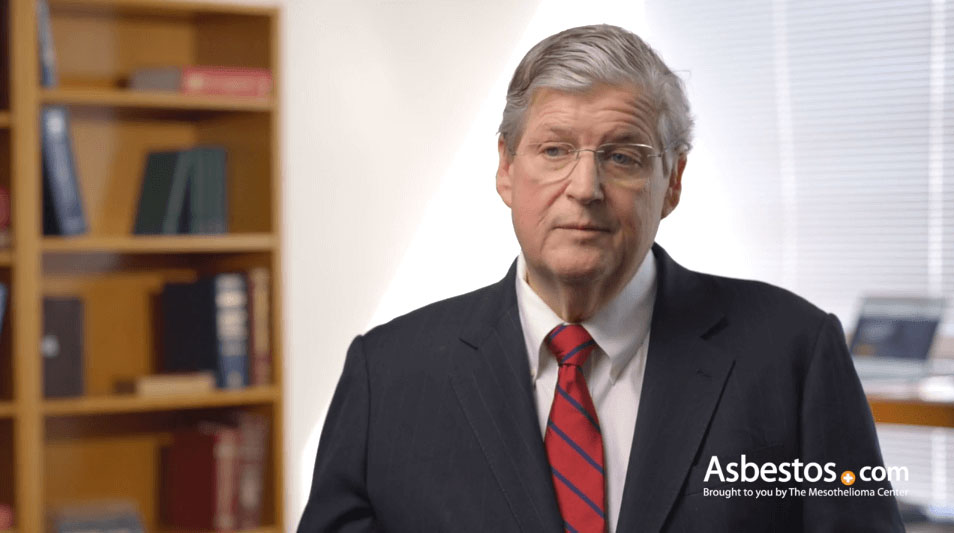The Sugarbaker Family Tree
Written by Tim Povtak | Edited By Walter Pacheco
For the last 30 years, the Sugarbaker name has been synonymous with advancing the treatment of malignant mesothelioma cancer, permanently etching it into past breakthroughs and future innovations.

Brothers and renowned surgical oncologists Drs. David Sugarbaker and Paul Sugarbaker have pioneered parallel paths to treating this rare and aggressive disease, creating a legacy that they — and other surgeons — continue building upon.
While David focuses on pleural mesothelioma in Houston, Paul concentrates on peritoneal mesothelioma in Washington D.C. The brothers remain today’s gold standard in the treatment of asbestos-related diseases.
Despite a distance of more than 1,400 miles, they are bound closely by a passion for what they still do every day — providing hope for mesothelioma patients everywhere.
“What they have done and continue to do is very impressive,” Mount Sinai Medical Center thoracic surgeon Dr. Raja Flores told Asbestos.com. The New York mesothelioma specialist trained under David and spent considerable time with Paul. “Watching them work has been inspirational to many of us.”
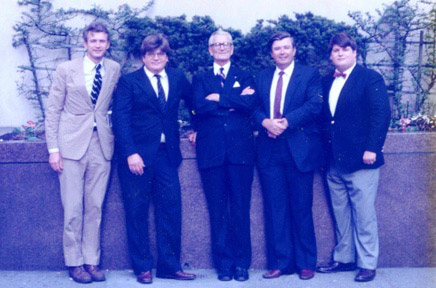
After publication of this story, Dr. David Sugarbaker died on Aug. 29, 2018. He was 65. In addition to his father’s and brother’s medical contributions, this story serves as a legacy of David’s accomplishments in the mesothelioma community.
Mesothelioma Treatment, Research Defines the Sugarbakers
David is the director of the Mesothelioma Treatment Center and Lung Institute at the Baylor College of Medicine in Houston. Among his peers and patients, he is known as “Mr. Mesothelioma.”
As a thoracic surgeon, he tackled his first case of pleural mesothelioma almost 30 years ago, embracing the challenge of treating a disease his peers deemed untreatable.
His leadership never has wavered.
Paul is medical director of the Center for Gastrointestinal Malignancies at MedStar Hospital Center in Washington D.C.
As a surgical oncologist focused on abdominal malignancies, Paul has led the fight against peritoneal mesothelioma since the early 1990s. He designed and popularized the treatments others have adopted.
The battles they wage today are different, based upon human anatomy and the intricacies of each disease. Yet their approach is similar, which is something they learned decades ago from their father Dr. Everett Sugarbaker — the man who started it all.
Dr. Everett Sugarbaker: Pioneer, Mentor
In the mid-1900s, surgical oncologist Dr. Everett Sugarbaker rarely saw a patient with mesothelioma cancer — a disease vaguely identified back in his day — but he set the stage for the two men who impacted this community more than anyone else in America.
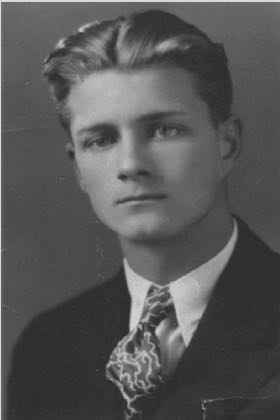
He taught his sons well.
“No doubt. This all started with our father,” Paul said from his office in Washington. “He was a huge influence on all of our lives. It shows in where we are today.”
Everett, the son of Dutch immigrants, began his medical career in the midst of the Great Depression. He was a pioneer in surgical oncology and training at the prestigious Memorial Sloan Kettering Cancer Center.
In 1942, he opened a practice at the new State Cancer Hospital in Columbia, Missouri. He was the first surgical oncologist to practice west of the Mississippi River, according to historians.
He raised 10 children there, including four boys who followed him to Cornell University Medical School and later became cancer surgeons.
“It was in the blood,” said David, the second youngest of Everett’s children. “It was an inspiration for me at a very young age. I had the benefit of seeing a career to model myself after. That was invaluable.”
Everett opened the Sugarbaker Tumor Clinic for Cancer in 1947.
It included its own radiation therapy machine and surgical procedure rooms. Patients came from across the state, often crowding his waiting room. They stood on the front porch, too, waiting for their turn. David still remembers the white sign with the red lettering that his father first hung on the column outside.
And he was famously known for bringing home his work. Over dinner, Everett would passionately discuss the challenges and importance of treating cancer, always looking for better ways to help his patients.
His tone was determined. His beliefs were strong. He was tireless, too. Often, he would start work before sunrise and leave the office after sunset.
Paul, the second oldest of the Sugarbaker children, remembers summers during medical school, returning home to join his father in the operating room in Missouri for a hands-on experience.
Take Your Child to Work Day was serious business in the Sugarbaker clan. Everyone participated.
When David was in high school, he recalls assisting his father. He would hold the surgical retractor and learn how to stitch up a patient when more hands were needed.
“It was a different world back then. Who knew about licenses? It was ‘come in and give me a hand,’” David said. “If you didn’t tie the knots right, maybe you’d get a tap on the wrist. It was a great lesson for me.”
Everett’s Hands-On Approach
Everett had clarity of purpose that left an unforgettable impression on every one of his children — and others. He recruited talented physicians, eventually building teams and infrastructure for cancer research. He never complained about anything he lacked.
He believed in the multimodal approach to cancer care long before everyone else. He often handled all combinations of procedures himself, which was a trait he passed on to his boys.
Everett silenced the New York City doubters who had questioned his move to rural Missouri, where no reputable cancer facilities existed. He never listened to the doubters. If he saw a problem, he focused on finding the solution.
He filled a giant void in surgery, much like his sons would do later in the mesothelioma community.
In the garage next to his family’s home, he built a personal research laboratory to satisfy his fascination with tumor biology. That’s where he crafted answers to his patients’ questions.
He kept laboratory mice and rats on which he transplanted tumor cells to study the metastatic patterns of different cancers.
The children often were tasked with much of the laboratory maintenance before and after school, sparking a similar pathological tumor fascination, which they carried into their own careers.
“We were all hands-on,” David said. “Thinking back, it was a little crazy.”
What David and Paul learned from their father was a never-give-up, can-do attitude both brothers use as a weapon to fight mesothelioma.
“I saw people coming to him who had been told their cancer was inoperable, incurable, and they shouldn’t waste anyone’s time,” David said. “But he took them, and I’d see those people coming back three and four years later. He taught us that you could take on a disease that was thought incurable, and progress could be made.”
[Our father] was a huge influence on all of our lives. It shows in where we are today.DR. PAUL SUGARBAKER
Sugarbakers Grow a Network of Mesothelioma Specialists
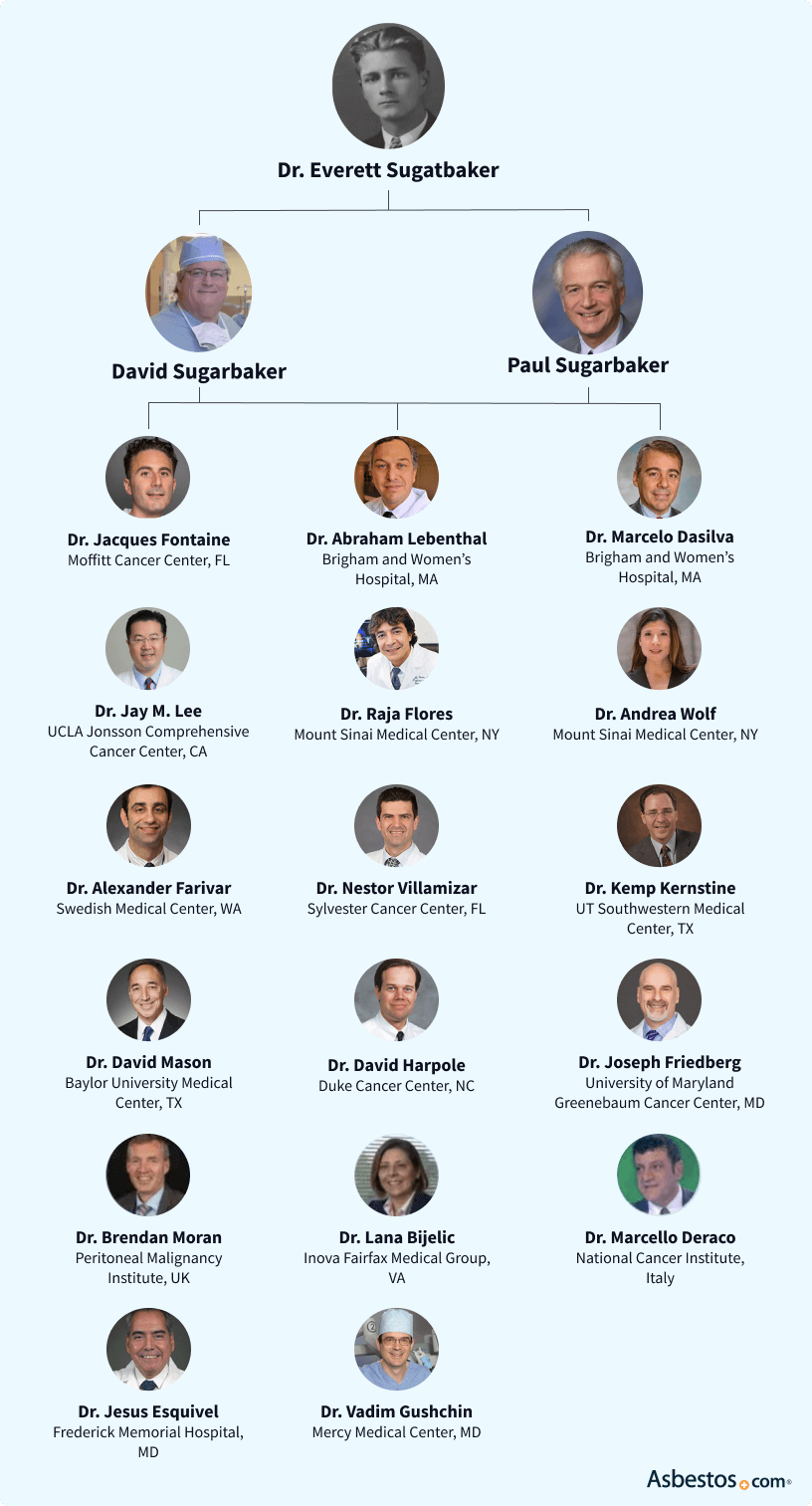
David Sugarbaker Builds Top Mesothelioma Programs
David still remembers the skepticism he faced when he first detailed his early success with aggressive surgery in treating previously untreatable pleural mesothelioma at a major medical conference in 1990.
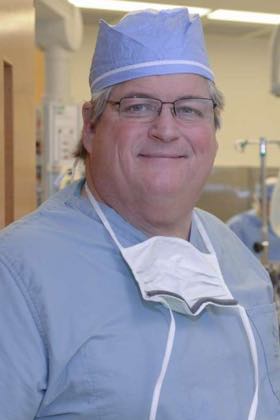
“I got hammered, just hammered by a number of different people there, including a well-known professor,” David recalled from his Baylor College of Medicine office. “They said if we adopted this practice, it would be a disaster for both patients and physicians alike.”
Fortunately, he didn’t listen to the skeptics. He spent the next 24 years building the world’s best mesothelioma program at Brigham and Women’s Hospital in Boston, founding a path marked by steady treatment advances that spread across the globe.
“When we first started, everything about this disease was unknown. Every patient died three to seven months after diagnosis,” he said. “There was no hope. The literature was filled with negative chemotherapy trials. Everyone was like, it’s not feasible [to aggressively treat it.]”
If you mapped out mesothelioma centers around the country, you would likely find at each, someone who was with Dr. David Sugarbaker in Boston. The majority of mesothelioma surgeons have been trained by him. People in every specialty there became experts in mesothelioma, and they’ve spread around the country. The radiologists became experts in interpreting mesothelioma imaging studies. The pathologists became experts in diagnosing types of mesothelioma. Thoracic surgical residents became experts in surgery. Anesthesiologists became experts in managing patients during surgery and intraoperative chemotherapy.DR. NESTOR VILLAMIZARSylvester Comprehensive Cancer Center, Miami
Taking on the Challenges of Mesothelioma
While most doctors wanted no part of an incurable cancer, David embraced the challenge. It was a trait he inherited from his father. He had no previous training with this disease, but he strongly believed in his strategy. Much of it was trial and error.
“You have to believe in the blade,” David said.
He was convinced a combination of complete tumor resection coupled with the right secondary treatment of micrometastatic disease would help patients thrive and survive considerably longer.
He was right.
David remembers doctors telling him: “You’ll destroy your own career with this disease. And when the bottom falls out, you’ll look like you don’t know what you are doing.”
He always responded: “How many have you done?” The answer was usually none.
“People didn’t want to touch it,” David said. “I wanted to help these patients.”
It didn’t take long for word to spread, attracting mesothelioma patients who found in David a talented surgeon, and their first ray of hope. The nearby Boston shipyards and abundant asbestos exposure in New England produced an inordinate number of patients with this rare disease.
Dr. David Sugarbaker is a pioneer in thoracic surgery and specifically mesothelioma. He always strove for perfection, no matter the circumstance. His numbers and outcomes in patients with mesothelioma are outstanding and reflective of his passion to help people suffering with this disease. I learned a great deal from him and will always consider him a true mentor of mine.DR. ALEXANDER FARIVARSwedish Medical Center, Seattle
Mr. Mesothelioma
As a surgical innovator, David began developing and refining the extrapleural pneumonectomy procedure (EPP), which significantly shrank the operative mortality rate.
“That became the surgical quest — redesigning the operation. I remember talking to my father about it, and he said, ‘You’re a good surgeon. You’ll figure it out,’” David said. “Then lo and behold, we’ve got a subgroup of patients alive and doing well after two years.”
The aggressive EPP surgery, which involves removing the entire cancerous lung, pleural lining around the thoracic cavity, nearby lymph nodes and parts of the diaphragm, became crucial in achieving the complete resection he needed.
The mesothelioma survival rate continued climbing, and his program started growing, attracting national and international attention that brought patients from everywhere.
David founded the International Mesothelioma Program at Brigham and Women’s Hospital. The program attracts medical professionals from around the world and raises awareness of the disease.
In the early years, David also was instrumental in developing a cancer staging system, something sorely lacking in the mesothelioma community. The Brigham staging system, which doctors use to determine the extent of tumor spread, helps oncologists better select surgical patients.
Under his leadership, Brigham and Women’s opened the first mesothelioma tissue bank, which sparked much-needed research, leading to more effective postsurgery drug combinations.
Tailoring cancer drugs to individual patients became a priority for David. It led to identifying genetic mutations unique to each patient’s tumors.
He led the push that personalized therapies for mesothelioma patients, moving away from the ineffective, one-size-fits-all approach.
Dr. David Sugarbaker’s legacy will endure through the accomplishments of all the prominent thoracic surgeons he has trained. He is the mentor of mentors. He pushed every trainee to the limit, not allowing them to accept the status quo and to always demand excellence from others and most importantly from themselves. His vision, focus and dedication to advancing the field of thoracic surgery and the treatment of mesothelioma, in particular, have influenced an entire generation of thoracic surgeons.Moffitt Cancer Center, Tampa
The Sugarbaker Walker
Away from the operating room, David designed the “Sugarbaker Walker,” a customized tool that eases patients into an exercise program to quicken their recovery after surgery.
Although David created it nearly 20 years ago, several cancer centers, including Mount Sinai Medical Center, Duke University Medical Center and Case Western Reserve Medical Center, continue using the device.
The latest upgrade includes an IV pole, a chest-tube vacuum, an oxygen tank, numerous catheters and room for monitors. The device is on wheels and has adjustable arm rests.
David Sugarbaker Continues to Build His Legacy
When he moved in 2015 to the Lung Institute at Baylor College of Medicine in Texas, it allowed him to build another mesothelioma program using everything he learned in Boston but in a larger scale.
It now includes a bigger research program — clinical and translational — along with the latest and best multimodal care.
“I’m totally focused on this disease today, bringing the very best surgical procedures and the best combination of other modalities,” David said. “We go for broke with each and every patient. I can’t stand here and say we can cure mesothelioma, but we’ll never get there unless that’s the goal.”
Many of his surgical patients from Boston have followed him to Texas, flying across the country for their regular checkups. They are loyal to the end.
He trained a whole generation of leaders in thoracic surgery. A lot of how I practice and how I operate stems from what I learned from Dr. David Sugarbaker. He didn’t just train surgeons. He trained leaders.Mount Sinai Medical Center, New York
David has several patients who have survived four, five and more years after surgery. A small subset of his patients has survived 10 years after surgery, and they still return to see him every year.
“I’m as revved up as ever to try and ring the bell,” David said. “We’re moving this forward. I tell patients all the time that when hope is part of the equation, anything is possible.”
-
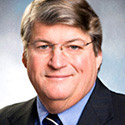 David SugarbakerRenowned Mesothelioma SpecialistDr. David Sugarbaker was regarded as the country’s foremost authority on pleural mesothelioma. He pioneered a surgery that significantly improved survival rates and revolutionized how the cancer is treated. He served as the director of several mesothelioma programs including the International Mesothelioma Program. He died Aug. 29, 2018.
David SugarbakerRenowned Mesothelioma SpecialistDr. David Sugarbaker was regarded as the country’s foremost authority on pleural mesothelioma. He pioneered a surgery that significantly improved survival rates and revolutionized how the cancer is treated. He served as the director of several mesothelioma programs including the International Mesothelioma Program. He died Aug. 29, 2018.
Paul Sugarbaker Breaks New Ground
In the office where Dr. Paul Sugarbaker counsels patients and medical professionals, there is a plaque with a phrase that has guided him through his pioneering efforts in the treatment of peritoneal mesothelioma.
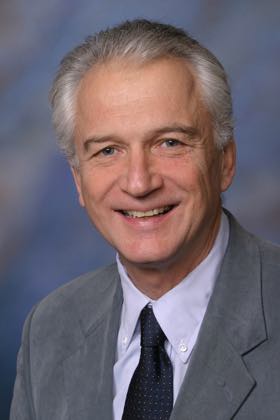
“Only those who risk going too far can possibly find out how far one can go,” reads the plaque. Those are the words from British literary great T.S. Eliot. It’s also the motto Paul adopted long ago.
Breaking new ground is part of his DNA. It’s the reason he is often lauded for turning this type of mesothelioma from incurable to manageable.
“It’s astounding how well we’re doing nowadays with this disease, compared to when we started,” Paul said from his office at the MedStar Health Research Institute in Washington, D.C. “It’s like a totally different disease. Median survival used to be a year at best. Now we expect that 70 percent of our patients will be alive and well here after 10 years. It’s unbelievable how far this has come.”
He has led the charge through his surgical innovation, breakthrough research and a willingness to challenge the boundaries of conventional medicine.
I don’t know of anyone in surgery today in the United States who had done more in one lifetime to push the field forward like [Paul] has for a disease like this.DR. LANA BIJELICSurgical oncologist at Inova Fairfax Hospital in Falls Church, Virginia
Bijelic added that “[Paul] was revolutionary. While everyone else was running away from the problem, he was developing the solution.”
The Sugarbaker Procedure
Today, surgeons across the country are using his Sugarbaker Procedure, a technique and therapy he helped develop and standardize for abdominal cancers, and one he later adapted for the treatment of mesothelioma.
The extensive procedure — lasting up to 12 hours — includes the removal of the abdominal lining and a complete cytoreduction throughout the peritoneal space. A hyperthermic intraperitoneal chemotherapy (HIPEC) wash completes the process.
It was initially deemed far too radical by the U.S. medical community because there were no randomized trials to prove its worth, but it became Paul’s signature treatment for peritoneal mesothelioma.
The Sugarbaker Procedure is one reason peritoneal mesothelioma patients typically live longer than those with the pleural type of the disease. A 2022 study reported that up to 76% of peritoneal mesothelioma patients who undergo the Sugarbaker Procedure live for 5 years or more.
I consider Dr. Paul Sugarbaker the global leader in surgical oncology. He has been the spark that ignited a global flame and the driving force in diffusion of the principles and indications for treatment all over the planet. He is a tireless innovator and one of the legends of our time. His inspirational enthusiasm, surgical prowess and commitment to the best outcomes inspired a whole generation of surgeons to take up this surgery and chemotherapy for patients with no options and with end-stage disease. He has spearheaded treatment for abdominal mesothelioma globally without faltering.DR. BRENDAN MORANPeritoneal Malignancy Institute, Basingstoke, UK

Receive a free guide with the latest information on emerging treatments and clinical trials.
Get Yours NowPaul Sugarbaker: ‘More to Accomplish’
Throughout his life, Paul has pushed hard for what he believes.
He left the National Institutes of Health (NIH) in 1986 after 10 years, hoping he could make a bigger impact elsewhere. In 1989, he left Emory University Hospital because it was far too confining for his career goals.
“They thought I was overly aggressive at Emory. They weren’t used to what I was doing, and what I wanted to do,” Paul said. “They saw me as ultraradical, but I knew there was more to accomplish.”
At Washington MedStar, he brought a belief in his strategy and the multimodal approach he first learned from his father long ago. Paul took the challenge of tackling mesothelioma, while others shied away from it or just gave up.
No other treatment has ever had such an impact on the quality of life for patients with mesothelioma than the surgical concept [Paul] introduced. He also was able to teach this methodology to many surgeons throughout the world, allowing patients everywhere to be able to access such cures with concrete hopes for an important clinical result.DR. MARCELLO DERACONational Cancer Institute, Milan, Italy
“There was an intellectual curiosity of how can we get at this problem,” Paul said. “There was a confidence that we had the tools, but we needed to optimize them. A chance to cut [the cancer] out is a chance to cure, but only if you can deal with the microscopic component of the disease left behind.”
Paul embraced the HIPEC procedure early when others questioned it. He believed stronger regional chemotherapy, not systemic, could eliminate the remaining cancer cells in the abdomen.
He added early postoperative intraperitoneal chemotherapy (EPIC) to the mix. Later, he supplemented it with normothermic intraperitoneal chemotherapy long term (NIPEC-LT). Others balked at that idea, too.
The European Journal of Surgical Oncology published the results of his 2017 study, which showed NIPEC-LT worked well with peritoneal mesothelioma.
Although the long-term chemotherapy procedure is often used to treat ovarian cancer, Paul is the only surgical oncologist consistently using it on patients with peritoneal mesothelioma.
“There were a lot of people doubting [Paul] every step of the way because he often moved in a different direction,” Bijelic said. “He never knew what it meant to give up like others did. He just worked and worked and worked. The level of contribution he makes is rare these days.”
[Paul] is responsible for first bringing the Sugarbaker Procedure to Mexico by his pioneering efforts. Because of him, we opened the first peritoneal and HIPEC workshop there. I helped put things together, and he executed the plan. We are very grateful for his impact in the country where I am from.Frederick Memorial Hospital in Frederick, Maryland
Paul is especially detailed in the use of intraperitoneal ports for regional chemotherapy delivery. And his laboratory work includes 20 years of detailing the effectiveness of different chemotherapy drugs in different situations.
He also is adamant about patients finding a cancer center and a cancer surgeon with vast experience treating mesothelioma. He believes that combination is critical to survival.
“It’s a huge issue because so much of how a patient does today is based on the expertise of the surgeon and his team. If you’re not doing the procedure frequently — 20 or more times a year — you can’t do it well,” Paul said. “Most people with peritoneal mesothelioma are managed at a center that doesn’t [treat] many of them, where maybe they do a good job, but maybe they don’t. We have no way of knowing.”
Although the rarity of peritoneal mesothelioma (less than 20 percent of all annual mesothelioma cases in the U.S.) makes progress difficult, Paul is currently working toward a randomized clinical trial that should provide more worldwide acceptance of his theories on surgery and regional chemotherapy.
“We can do a better job with mesothelioma for everyone by moving it forward,” Paul said. “And that’s part of what we do — trying to help everyone everywhere.”
-
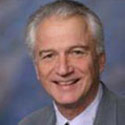 Paul H. SugarbakerSurgical OncologistDr. Paul Sugarbaker is the country’s leading expert on peritoneal mesothelioma. He developed the widely renowned cytoreductive surgery and heated chemotherapy technique that changed the landscape of peritoneal cancer treatment. Many people with peritoneal mesothelioma are alive today because of Sugarbaker’s innovations.
Paul H. SugarbakerSurgical OncologistDr. Paul Sugarbaker is the country’s leading expert on peritoneal mesothelioma. He developed the widely renowned cytoreductive surgery and heated chemotherapy technique that changed the landscape of peritoneal cancer treatment. Many people with peritoneal mesothelioma are alive today because of Sugarbaker’s innovations.
The Sugarbaker Legacy
Mesothelioma cancer isn’t going away in the foreseeable future and neither is the influence of the Sugarbaker brothers.
The future of mesothelioma treatment, particularly from a surgical perspective, is in good hands. And it will continue to improve, thanks to the way in which they have handled their practices and teaching others what they have learned.
They have prepared the next generation well — much like their father once did.
Surgeons Who Trained Under David Sugarbaker
There are almost a dozen thoracic surgeons across the U.S. today who have become mesothelioma specialists after training under Dr. David Sugarbaker.
“One of my goals was to put quality surgeons and leaders into programs across the country where the patients were,” David said. “It wasn’t about me. It was about giving patients the access they needed. The residents working with me picked up a skill set that was unlike anything else. A skill no one else had. That appealed to them.”
Paul Sugarbaker’s Gift to Other Surgeons
Paul was equally interested in sharing his work, offering his experience to young surgeons throughout the world who could build on what he has done. He remains the executive director of the Peritoneal Surface Oncology International Program.
“I think part of your obligation as an innovator is to pass on what you learned and what you accomplished so others can expand on it,” Paul said. “You help everyone that way.”
He did the first Sugarbaker Procedure in Mexico 20 years ago, literally donating the equipment to do it, according to Dr. Jesus Esquivel, now at Frederick Memorial Hospital in Frederick, Maryland.
Alongside Dr. Brendan Moran, a colorectal surgeon, Paul performed the first cytoreduction and HIPEC combination in the United Kingdom 24 years ago.
Paul travels to Europe at least four times each year to teach a course in peritoneal surgical oncology. He lectures extensively in the U.S. and internationally. He makes videos. He writes books. And he’s on the editorial board of 11 medical journals.
‘There Still Is a Long Way to Go’
There are mesothelioma specialists today within the U.S. and throughout the world who owe their expertise to one of the two Sugarbaker brothers.
They taught as well as they performed in the operating room, passing on the passion and the beliefs that their father passed to them.
Advancements today and tomorrow in mesothelioma treatment can and will be traced back to them.
“I think we both saw ourselves as trying to bring new and beneficial things to those with this rare disease,” Paul said of his and David’s breakthroughs. “It’s come a long way, but there still is a long way to go.”

